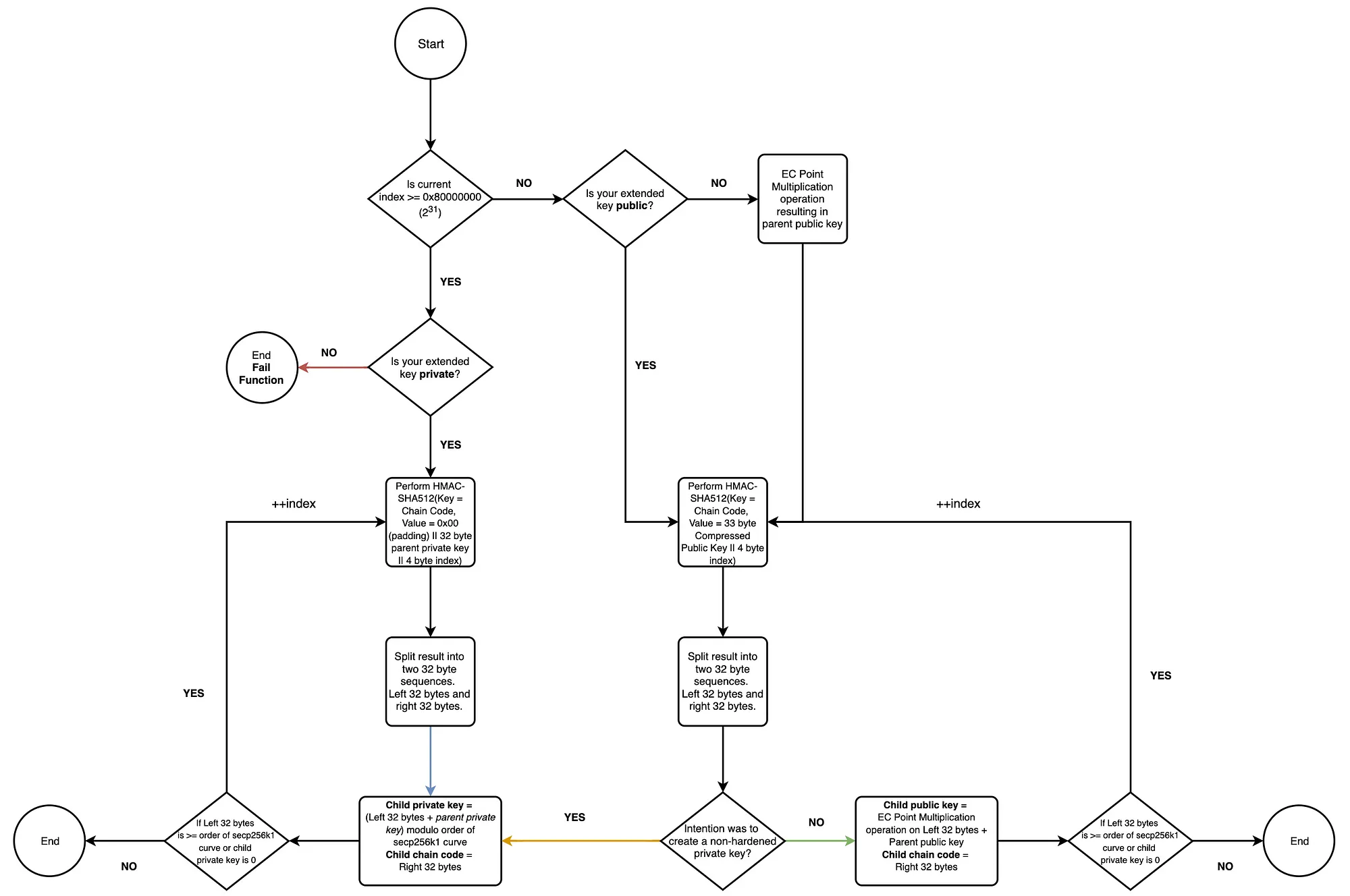mastering bitcoin - 笔记
ch02 How Bitcoin Works
Alice to Bob’s rawtx(P2PKH)
0100000001186f9f998a5aa6f048e51dd8419a14d8a0f1a8a2836dd734d2804fe65fa35779000000008b483045022100884d142d86652a3f47ba4746ec719bbfbd040a570b1deccbb6498c75c4ae24cb02204b9f039ff08df09cbe9f6addac960298cad530a863ea8f53982c09db8f6e381301410484ecc0d46f1918b30928fa0e4ed99f16a0fb4fde0735e7ade8416ab9fe423cc5412336376789d172787ec3457eee41c04f4938de5cc17b4a10fa336a8d752adfffffffff0260e31600000000001976a914ab68025513c3dbd2f7b92a94e0581f5d50f654e788acd0ef8000000000001976a9147f9b1a7fb68d60c536c2fd8aeaa53a8f3cc025a888ac00000000
its parent rawtx
0100000001524d288f25cada331c298e21995ad070e1d1a0793e818f2f7cfb5f6122ef3e71000000008c493046022100a59e516883459706ac2e6ed6a97ef9788942d3c96a0108f2699fa48d9a5725d1022100f9bb4434943e87901c0c96b5f3af4e7ba7b83e12c69b1edbfe6965f933fcd17d014104e5a0b4de6c09bd9d3f730ce56ff42657da3a7ec4798c0ace2459fb007236bc3249f70170509ed663da0300023a5de700998bfec49d4da4c66288a58374626c8dffffffff0180969800000000001976a9147f9b1a7fb68d60c536c2fd8aeaa53a8f3cc025a888ac00000000
ch04 Keys, Addresses
K=kG, 0<k<=n-1
n(1.1578 * 1077) is slightly less than 2^256(order of elliptic curve)
A=RIPEMD160(SHA256(K)), or A=HASH160(K)
checksum = first 4 bytes of: SHA256(SHA256(prefix + data))
Base58Check-encoded Payload = Base58(prefix + data + checksum)
Base58Check version prefix and encoded result examples
| Type | Version prefix (hex) | Base58 result prefix |
|---|---|---|
| Bitcoin Address | 0x00 | 1 |
| Pay-to-Script-Hash Address | 0x05 | 3 |
| Bitcoin Testnet Address | 0x6F | m or n |
| Private Key WIF | 0x80 | 5, K, or L |
| BIP-38 Encrypted Private Key | 0x0142 | 6P |
| BIP-32 Extended Public Key | 0x0488B21E | xpub |
uncompressed public key = 04 x y
compressed public key = 02 x(y is even) or 03 x(y is odd)
compressed private key (for wallet import format) = uncompressed private key 01
ch05 Wallets
mnemonic(128-256 bits) -> (optinaly with salt) key-stretching function PBKDF2(2048 rounds of HMAC-SHA512) -> seed(512-bit) -> HMAC-SHA512 -> master pri key(left 256 bits) + master chain code(right 256 bits)
CKD function visualized. from a nice blog of @blainemalone01 on medium.

- Mnemonic code words, based on BIP-39
- HD(hierarchical deterministic) wallets, based on BIP-32
- Multipurpose HD wallet structure, based on BIP-43
- Multicurrency and multiaccount wallets, based on BIP-44:
m / purpose'(always 44’) / coin_type' / account' / change(0 for receiving address or signing prikey, 1 for change address) / address_index (usable addresses)
ch07 Advanced Transactions and Scripting
p2sh(BIP-16)
- execute scriptSig
- the stack gets copied (contains <redeem script>, which is the original scripPub of p2pbk or p2ms)
- execute scriptPub
- pop and deserialize <redeem script> from the copied stack, which becomes the new locking script
2-of-3 multisig script using p2sh adds an extra 25 bytes to the overall script, compared to 2-of-3 multisig script using the simple P2MS pattern.
segwit
- BIP-141 The main definition of Segregated Witness.
- BIP-143 Transaction Signature Verification for Version 0 Witness Program
- BIP-144 Peer Services—New network messages and serialization formats
- BIP-145 getblocktemplate Updates for Segregated Witness (for mining)
- BIP-173 Base32 address format for native v0-16 witness outputs
A scriptPubKey (or redeemScript as defined in BIP16/P2SH) that consists of a 1-byte push opcode (for 0 to 16) followed by a data push between 2 and 40 bytes gets a new special meaning, which is interpreted as “version byte” + “witness program”.
two cases in which witness validation logic are triggered:
- native witness program: above pattern is in scriptPubKey (scriptSig must be empty or validaition fails)
- P2SH witness program: above pattern is in redeemScript (scriptSig must be exactly a push of the BIP16 redeemScript or validation fails)
version byte = 0 && witness program = 20 bytes: interpreted as P2WPKH program, the witness must consist of exactly 2 items (≤ 520 bytes each). The first one a signature, and the second one a public key.
version byte = 0 && witness program = 32 bytes: interpreted as P2WSH program, The witness must consist of an input stack to feed to the script, followed by a serialized script(witness script, ≤ 10,000 bytes).
ch08 The Bitcoin Network
- P2P network
- FIBRE(fast internet bitcoin relay engine) 挖矿用
full node
SPV node
只存储Block头。SPV verifies transactions by reference to their depth in the blockchain instead of their height。节点等待6个新block堆叠在包含tx的block上,以此证明tx被认证了。
消息(会过滤peer连接中的block和tx消息):
- getheaders(headers,包含2000个)
- getdata(merkleblock,tx)
- filterload, filteradd, filterclear(BIP-37 请求特定tx会暴露钱包管理的地址,所以引入Bloom Filters提高私密性)
通过消息加密来提升SPV节点的隐私性
- Tor
- P2P层面 : Peer Authentication(BIP-150), Peer-to-Peer Communication Encryption(BIP-151)
ch09 The Blockchain
Block
|Size| Field | Description | | – | – | – | | 4 bytes | Block Size | The size of the block, in bytes, following this field | | 80 bytes | Block Header | Several fields form the block header | | 1–9 bytes (VarInt) | Transaction Counter | How many transactions follow | | Variable | Transactions | The transactions recorded in this block |
Block Header(40 bytes)
|Size| Field | Description | | – | – | – | | 4 bytes | Version | A version number to track software/protocol upgrades | | 32 bytes | Previous Block Hash | A reference to the hash of the previous (parent) block in the chain | | 32 bytes | Merkle Root | A hash of the root of the merkle tree of this block’s transactions | | 4 bytes | Timestamp | The approximate creation time of this block (in seconds elapsed since Unix Epoch) | | 4 bytes | Difficulty Target | The Proof-of-Work algorithm difficulty target for this block | | 4 bytes | Nonce | A counter used for the Proof-of-Work algorithm |
authentication path, or merkle path: nodes in the merkle tree to make hash with, bottom-up.
The merkleblock message contains the block header as well as a merkle path that links the transaction of interest to the merkle root in the block
ch12 Blockchain Applications
payment channel / state channel
funding transaction / anchor transaction (on-chain) —-> commitment transactions (off-chain, each state invalidates previous state) —-> settlement transaction (on-chain)
various mechanisms that can be used to invalidate prior state :
-
transaction-level timelocks (nLocktime)
The refund transaction acts as the first commitment transaction and its timelock establishes the upper bound for the channel’s life.
Each commitment sets a shorter timelock, allowing it to be spent before the previous commitments become valid
-
Asymmetric revocable commitments with relative time locks (CSV CheckSequenceVerify)
time delay+revocation keyas a punishment/disadvantage/penalty我构造的(让对方签的)tx包含如下输出
Output 0 <5 bitcoin>: <对方的 Public Key> CHECKSIG Output 1 <5 bitcoin>: IF # Revocation penalty output <Revocation Public Key> ELSE <1000 blocks> CHECKSEQUENCEVERIFY DROP <我的 Public Key> ENDIF CHECKSIG进入下一个state,我要revoke我自己的tx,做法是:把我的half of the revoke secret发送给对方。
在每个阶段,对方也持有类似的一个tx。
routed payment channels (lightning network)
HTLC (hash time lock contract)
- hash: redeem immediately
- time lock: refund after timeout(if the secret is not revealed)
疑问1 在channel末端,返回private key后,为什么channel中的每个节点必须把key传给上家?当前节点有了key就可以直接得到钱了啊
